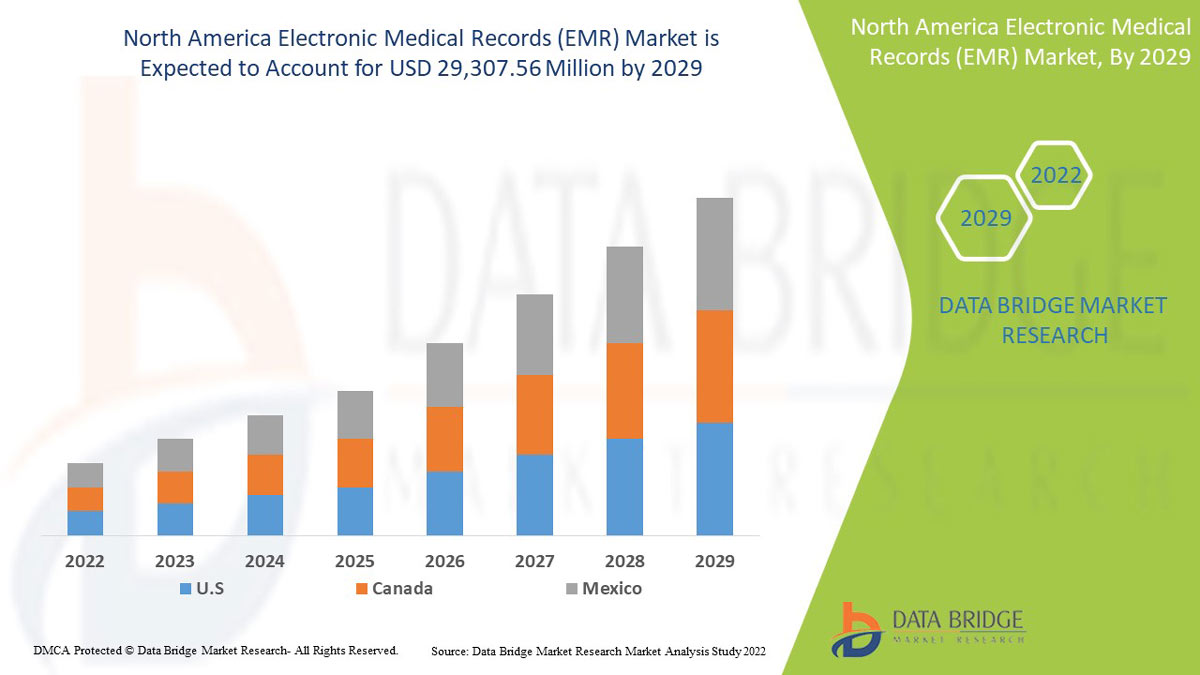The North America Electronic Medical Records (EMR) Market has grown rapidly over the last decade, driven by the region’s strong focus on healthcare digitization, improved patient care, and regulatory initiatives. In 2024, the market size was valued at over USD 15 billion, and it is expected to continue expanding at a steady CAGR of around 6–7% through 2030.
What Are Electronic Medical Records?
Electronic Medical Records (EMRs) are digital versions of patients’ paper charts that provide real-time, patient-centered records accessible instantly and securely to authorized users. EMRs help streamline workflows, improve diagnosis accuracy, and enhance overall healthcare efficiency.
Key Market Drivers
1. Government Initiatives and Incentives
The U.S. government’s strong support for health IT adoption, including programs like the Health Information Technology for Economic and Clinical Health (HITECH) Act, has accelerated EMR implementation across hospitals and clinics.
2. Focus on Reducing Healthcare Costs
EMRs help minimize errors, reduce paperwork, and lower administrative costs. They enable better care coordination and preventive care, ultimately reducing overall healthcare expenditures.
3. Growing Need for Data-Driven Decision Making
The increasing emphasis on personalized and value-based care is driving healthcare providers to adopt EMR systems, enabling them to leverage patient data for better treatment outcomes and operational efficiency.
4. Rising Chronic Disease Prevalence
With the growing burden of chronic diseases such as diabetes, cardiovascular disorders, and cancer, EMRs play a vital role in managing large volumes of patient data and supporting long-term treatment plans.
Market Segmentation
By Component:
- Software
- Services
By Type:
- Acute EMR
- Ambulatory EMR
- Post-acute EMR
By End User:
- Hospitals
- Physician offices
- Ambulatory surgical centers
- Specialty clinics
Regional Insights
The United States dominates the North American EMR market due to high healthcare IT spending, advanced infrastructure, and stringent regulatory requirements for data security and interoperability. Canada is also witnessing growing EMR adoption, supported by provincial initiatives to improve healthcare access and digital health integration.
Challenges
Despite strong growth, the EMR market faces challenges such as high implementation costs, data privacy and security concerns, and interoperability issues among different healthcare systems. Additionally, resistance to change among healthcare providers can slow adoption in certain settings.
Future Outlook
The future of the North American EMR market looks promising, supported by continuous technological advancements, the growing trend of telehealth, and AI integration into healthcare IT systems. The shift toward patient-centered care and the development of interoperable and cloud-based EMR platforms will further drive market expansion and transform healthcare delivery in the region.
Get More Details:
| https://www.databridgemarketresearch.com/reports/north-america-electronic-medical-records-emr-market |


